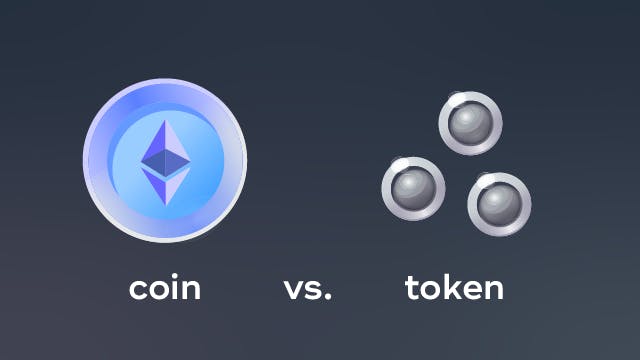Coin vs. Token: What’s the Difference?
Publicado el
15 de junio de 2021
Compartir
So, you’ve finally managed to wrap your head around the basics of cryptocurrency and blockchain technology, and you’re ready to take your crypto knowledge to the next level. Today, we’re covering a topic that even some experienced crypto users may not be familiar with: the difference between coins and tokens.
You’ve probably seen the words coin and token being thrown around in the crypto space. These words are often used interchangeably, but did you know they actually have two entirely different meanings?
If you’re looking to improve your understanding of cryptocurrency, this article is for you. Read on to find the proper definitions of coin and token and their differences.
Key Takeaways
A coin is a cryptocurrency that has its own independent blockchain network.
Tokens do not use their own independent blockchain.
Tokens can be more than cryptocurrencies - they can be digital representations of just about anything.
What is a coin?
A coin is a cryptocurrency that has its own independent blockchain network. Confusingly, crypto coins are also sometimes called “native tokens” because they are native to their individual blockchain.
For example, Bitcoin (BTC) is the most popular coin and is powered entirely by its own blockchain network. Another popular coin is Ethereum (ETH). The Ethereum blockchain can be used to execute smart contracts and build decentralized applications. Users can send and receive assets and pay for the computing power required to carry out specific tasks using the blockchain’s native token, ETH.
While the technology behind coins is often built from scratch, they can take inspiration from their predecessors. For example, take Litecoin (LTC), which was built using Bitcoin’s source code but modified to work much faster. To take things further, Dogecoin (DOGE), another popular coin, was designed based on Litecoin’s code.
What is a token?
While the main characteristic of a crypto coin is that it must have its own blockchain network, a crypto token is the opposite: it runs on another blockchain.
The most common examples of tokens use the Ethereum blockchain and are referred to as ERC-20 or ERC-677.
One popular token is Chainlink (LINK). Chainlink uses an ERC-677 token on the Ethereum network and helps provide real-world data to smart contracts on the blockchain. Chainlink's digital asset token, LINK, is used to pay for services on the network by creating smart contracts that can interact with real-world events and information that exists off-blockchain.
Another popular Ethereum-based token is the stablecoin USD Coin (USDC). USDC uses ERC-20 to tokenize the US Dollar on the Ethereum blockchain.
While tokens can be used for an exchange of value like with LINK and USDC, they can also digitally represent non-currency assets exchanged on the blockchain like NFTs, which also typically run on the Ethereum network. Tokens can be used to digitally buy or sell real-world assets like gold, real estate, or shares of a company.
Final Thoughts
To summarize, all digital currencies can be called cryptocurrencies, but not all cryptocurrencies can be called coins. Tokens can be cryptocurrencies, but they can also be NFTs and other non-currency assets.
As confusing as it sounds, knowing the difference between tokens and coins is an excellent way to impress the crypto experts in your life.
At CoinFlip, keeping our coins and tokens straight is pretty straightforward. We currently only offer two tokens, and that is the USDC stablecoin and LINK token which, as I mentioned above, run on the Ethereum blockchain. Otherwise, all seven additional cryptos on our roster can safely be referred to as coins.
Compartir
Suscríbete a nuestro boletín para recibir descuentos exclusivos, noticias de la empresa y mucho más de CoinFlip.
Más historias
Advanced Crypto Wallets Explained: Paper, Multi-Sig, Decoy and ID Wallets
8 de octubre de 2025
Scott Wilson
Lose your Wallet? Here's How to Recover your Bitcoin
27 de agosto de 2025
Scott Wilson
Best Ways to Buy Bitcoin
19 de agosto de 2025
Scott Wilson

